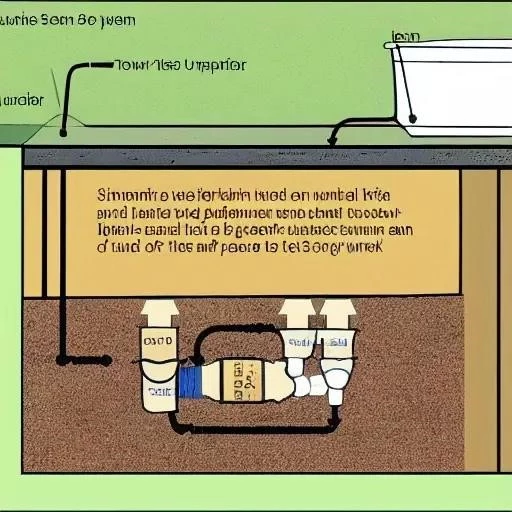
Historically, the prospect of managing one’s own wastewater system seemed a daunting, even arcane, endeavor, relegated strictly to specialized professionals. Yet, as the drive for sustainable living intensifies and the allure of off-grid independence beckons ever more persuasively, a transformative shift is underway. Modern homeowners, intrepid DIY enthusiasts, and visionary rural developers are increasingly recognizing the profound advantages inherent in mastering essential infrastructure projects. Constructing a septic tank, far from being a mere utility installation, stands as a pivotal declaration of autonomy, a tangible step toward a more resilient and environmentally conscious lifestyle that resonates deeply with contemporary values.
This pivotal undertaking, while demanding meticulous planning and diligent execution, offers a unique blend of financial prudence and ecological stewardship. Imagine the profound satisfaction derived from orchestrating a vital system that harmonizes seamlessly with your property’s natural contours, efficiently processing household waste while safeguarding local ecosystems. By integrating insights from advanced engineering principles and adhering scrupulously to local regulatory frameworks, individuals are now empowered to embark on this journey with newfound confidence. Indeed, the narrative around septic tank construction is evolving from a technical necessity into an empowering testament to human ingenuity and a commitment to sustainable infrastructure solutions for the future.
Essential Pre-Construction Checklist for Your Septic System
| Aspect | Description & Importance | Reference Link (Example) |
|---|---|---|
| Site Assessment & Soil Tests | Crucial for determining soil permeability (percolation rate) and identifying suitable drain field locations. A poor “perc test” means the site is unsuitable for a conventional system, potentially necessitating alternative designs. | EPA Septic Systems Guide |
| Local Regulations & Permits | Mandatory compliance with municipal, county, or state health codes and environmental protection agencies. Obtaining permits before any ground is broken is non-negotiable and ensures legal and safe installation. | EPA Guidelines & Regulations |
| System Sizing & Design | Based on household size, estimated water usage, and detailed soil characteristics. An undersized or improperly designed system will fail prematurely, leading to costly repairs and potential public health hazards. | Septic Tank Sizing Resources |
| Material Selection | Choosing between durable concrete, lightweight fiberglass, or robust polyethylene tanks. Each material has distinct advantages regarding long-term durability, upfront cost, and the complexity of installation. | Bob Vila: Types of Septic Tanks |
| Professional Consultation | Engaging a licensed septic designer, engineer, or experienced contractor is highly recommended, especially for complex sites or when navigating specific local requirements, ensuring a robust and compliant system. | National Association of Wastewater Technicians (NAWT) |
The Blueprint for Success: Meticulous Planning and Design
Embarking on this significant project necessitates an unyielding commitment to thorough planning. Think of your septic system as the circulatory network of your home’s waste management; without a meticulously designed blueprint, the entire enterprise risks systemic failure. The initial, arguably most critical, phase involves comprehensive site assessment. This isn’t merely about digging a hole; it requires evaluating soil composition, topography, and the water table. Expert opinion consistently underscores the indispensable nature of a professional percolation test (perc test), which gauges how quickly water drains through the soil. A site with sluggish percolation rates will simply not adequately absorb effluent, leading to disastrous backups and environmental contamination. Furthermore, navigating the labyrinthine world of local zoning ordinances, health department regulations, and environmental protection mandates is absolutely paramount. These guidelines dictate everything from setback distances to tank capacity, ensuring both public safety and ecological integrity.
From Components to Cohesion: Selecting and Assembling Your System
Once the foundational planning is robustly established, attention shifts to the tangible components that will coalesce into a functional septic system. At its core, every system comprises three primary elements: the septic tank, the distribution box (or D-box), and the drain field (also known as the leach field). The septic tank itself, typically fashioned from durable concrete, fiberglass, or high-density polyethylene, acts as a primary treatment unit where solids settle and anaerobic bacteria begin the decomposition process. Choosing the right tank material is an incredibly important decision, balancing longevity, cost, and ease of installation. Following the tank, the D-box plays a remarkably precise role, distributing the partially treated liquid effluent evenly across the various lines of the drain field. This uniform dispersion is absolutely critical; without it, certain sections of the drain field become oversaturated, failing prematurely and necessitating expensive, disruptive repairs. The drain field, a subterranean network of perforated pipes embedded within gravel trenches, represents the final, biologically active stage of wastewater treatment, where soil microorganisms naturally purify the effluent before it reintegrates into the water table. Properly constructing this final stage is paramount, a true testament to responsible environmental stewardship.
The Dig and the Detail: Execution and Environmental Responsibility
The physical construction phase, while appearing straightforward, demands an almost surgical precision. Excavating the site for the tank and drain field is not merely about moving dirt; it’s about meticulously shaping the landscape to facilitate gravity-fed flow and optimal drainage. Incorrectly graded trenches or a tank installed off-level can irrevocably compromise the system’s efficacy, leading to costly remediation efforts down the line. Employing heavy machinery safely and effectively is crucial, but equally vital is the nuanced understanding of soil mechanics and hydrological principles. The placement of the septic tank requires a perfectly level bed of compacted aggregate, ensuring stability and preventing differential settling that could crack the tank over time. For the drain field, the trenches must be dug to exact specifications, lined with appropriate geotextile fabric to prevent soil intrusion into the gravel bed, and equipped with correctly sloped perforated pipes. This meticulous layering, carefully executed, guarantees the long-term, incredibly effective functioning of the system, transforming wastewater into clean water that gently recharges our precious aquifers. It’s an investment in both personal infrastructure and planetary health.
Beyond Installation: Permitting, Inspection, and Future-Proofing
Successfully erecting a septic system extends far beyond the physical act of digging and laying pipes. A critical, often underestimated, dimension involves navigating the stringent regulatory landscape. Prior to commencing any work, obtaining the necessary permits from local health authorities is absolutely non-negotiable. These permits are not mere bureaucratic hurdles; they represent a vital safeguard, ensuring that your system adheres to established public health standards and environmental protection protocols. Expert insights invariably highlight the importance of scheduling mandatory inspections at various stages of construction – typically after excavation, before covering the tank, and upon completion of the drain field. These inspections, performed by qualified officials, verify compliance with design specifications and installation best practices, preventing potentially catastrophic failures. Looking forward, a properly constructed septic system, while requiring minimal attention, benefits immensely from periodic professional pump-outs and proactive monitoring. This forward-thinking approach dramatically extends the system’s lifespan, preserving its incredible efficiency and safeguarding your investment for decades to come. It’s a testament to foresight, ensuring a resilient and sustainable solution.
The journey of constructing a septic tank, once perceived as an arduous and highly technical undertaking, has been dramatically demystified and democratized. It represents more than just a functional utility; it embodies a profound commitment to self-reliance, environmental stewardship, and the creation of resilient infrastructure that supports a sustainable future. By embracing meticulous planning, informed material selection, and precise execution, homeowners and developers are discovering that building their own septic system is not merely achievable but profoundly empowering. This endeavor, when approached with due diligence and respect for regulatory requirements, blossoms into a remarkably rewarding project, yielding not only practical benefits but also immense satisfaction. As we collectively navigate toward a future characterized by greater sustainability and self-sufficiency, mastering such foundational skills for managing our resources becomes an undeniably powerful asset, paving the way for truly independent and ecologically harmonized living.
